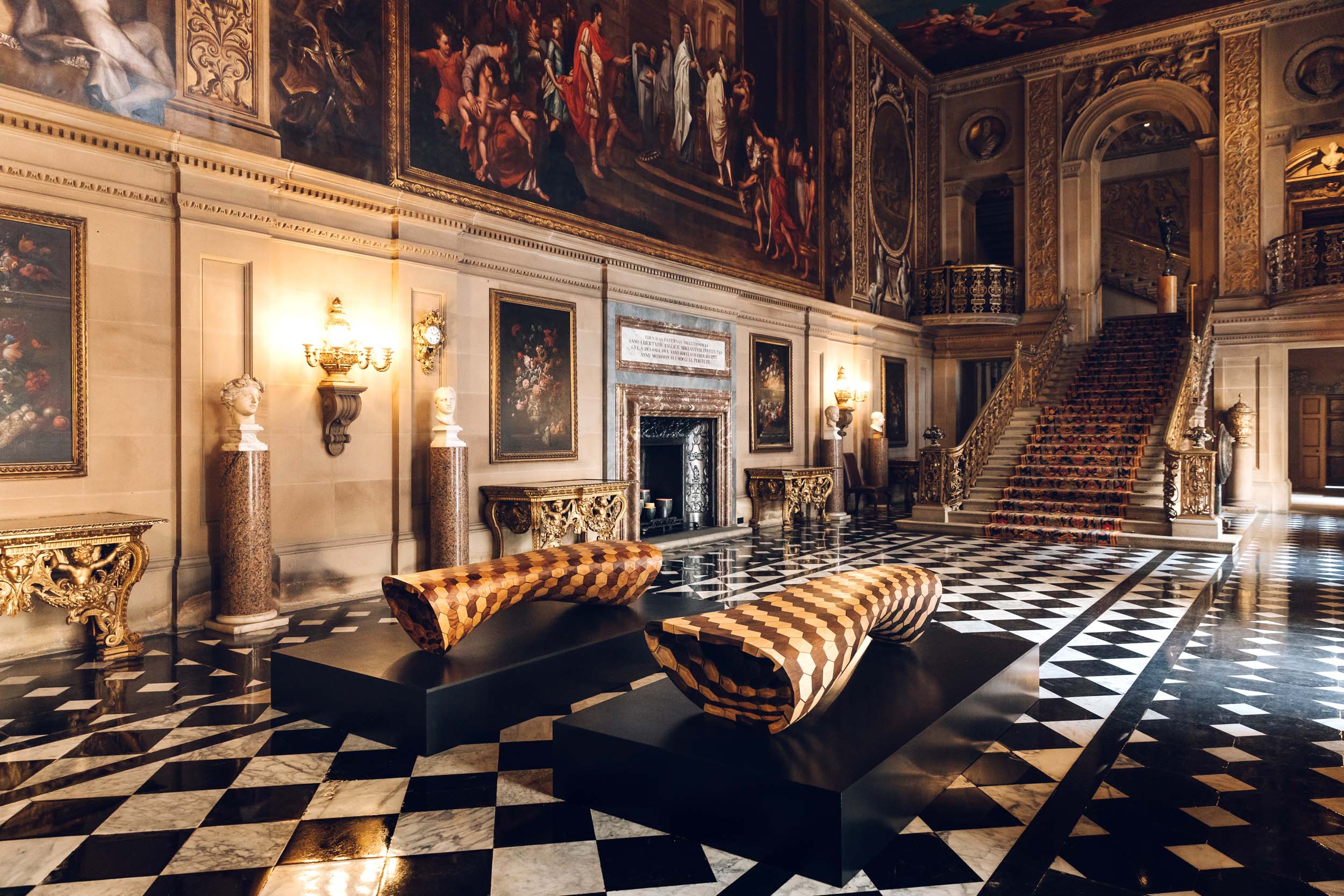With a collection that includes a crimson damask bed likely made for King George II and David Roentgen cabinetry, England’s Chatsworth House in Derbyshire has no shortage of historic furniture. Yet despite its 500-year history, Chatsworth refuses to look backward. For its latest exhibition, the stately home has opened its doors to a troupe of 16 contemporary furniture designers from around the world. Mirror Mirror: Reflections on Design at Chatsworth, running until October 1, is co-curated by Alex Hodby, senior curator of programme at Chatsworth, and writer, historian, and curator Glenn Adamson. The show’s title, explained Adamson, illustrates the intention to “look both ways,” and create dialogue across the Chatsworth’s immense art collection, amassed by 16 generations of the Cavendish family.

Yet it’s also a reference to fairy-tale illusions, and indeed, in this show, nothing is quite what it seems. In Chatsworth’s state music room, one of the property’s most famous works of art, a trompe l’oeil painting of a violin, appears to hang from a real metal peg on the door itself.

The curators commissioned a site-specific artwork by Jay Sae Jung Oh, a Seattle-based designer from South Korea, to respond to the state music room. Her answer was a musical throne, complete with French horn and a drum. The seat looks like solid wood, yet up close it’s clear the instruments have been muffled, shrink-wrapped in leather cord. Meanwhile, in the house’s grand state bedchamber, London-based Mexican designer Fernando Laposse enhances the room’s moody opulence with a 2-meter-high cabinet wearing a shaggy white coat. Laposse created the fur-like shroud from sisal fibers with local craftspeople in the Mexican village of Tonahuixtla. In this rethinking and elevation of everyday objects like benches, chairs, and vessels, the Chatsworth show celebrates a cross section of what Adamson called today’s “design avant-garde.”

“It’s about plumbing the depths of what these familiar design typologies can be made to do and a real sense of discovery and possibility,” he said. Outside on the mansion’s sprawling grounds, a seating sculpture by Lebanese designer Najla El Zein carved from Iranian red travertine is installed, as are two living benches from Dutch designer Joris Laarman. Made of gritrock from a local quarry, the same material used to build Chatsworth’s main house, Laarman’s seats are inlaid with planted moss and lichens. Nearby, an impressive trio of bronze sculptures by the late American furniture designer Wendell Castle are gathered at the edge of the Ring Pond.
In one of the exhibition’s biggest moments, British artist Faye Toogood commandeered the chapel for Standing Stones, a series of monolithic forms made out of Purbeck marble, a limestone found in Dorset. “I felt like I was revealing something that had always been there—something almost prehistoric that had been lost to time, and it was my job to find it again,” Toogood stated.

Another British artist, Samuel Ross, injected his marble and bright orange steel sculptures with a modernism heavily influenced by Brutalist architecture and the housing estates he grew up in. Ross created the pieces in response to the reclining 18th-century figures of Filippo Albacini and Antonio Canova in Chatsworth’s sculpture gallery.
Other exhibits include works by Detroit-based designer Chris Schanck, a chandelier by the U.S.-born, Switzerland-based industrial designer Ini Archibong, and a series of abstract pots by South African ceramicist Andile Dyalvane. Contemporary shows in historic spaces are often described as “interventions,” but Adamson conceived of Mirror Mirror as adding another layer to Chatsworth’s existing collection. “It felt for me like being invited to sit down and add one melody line to an existing orchestral composition,” he said.
